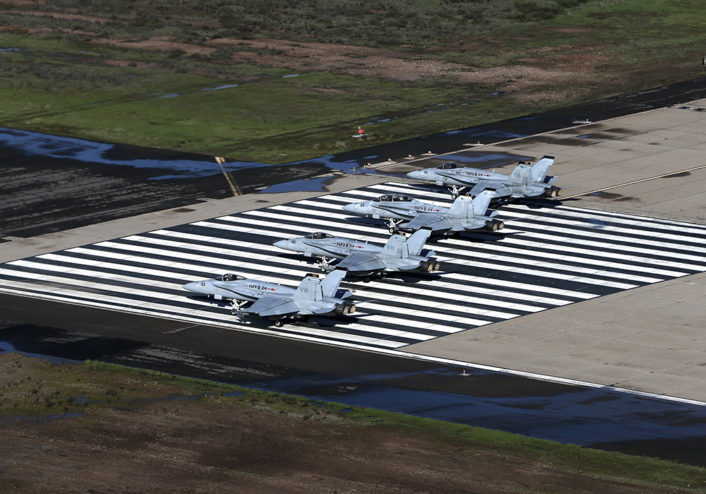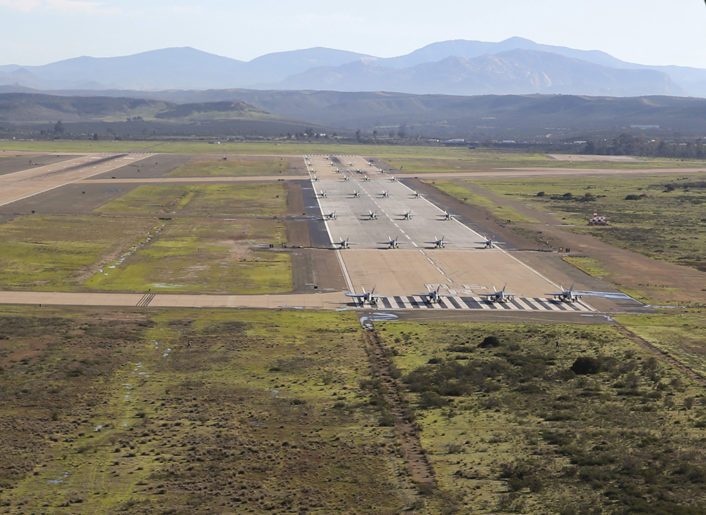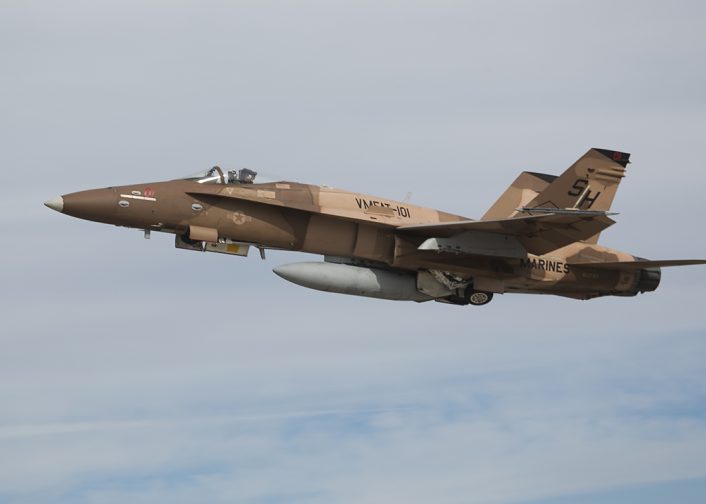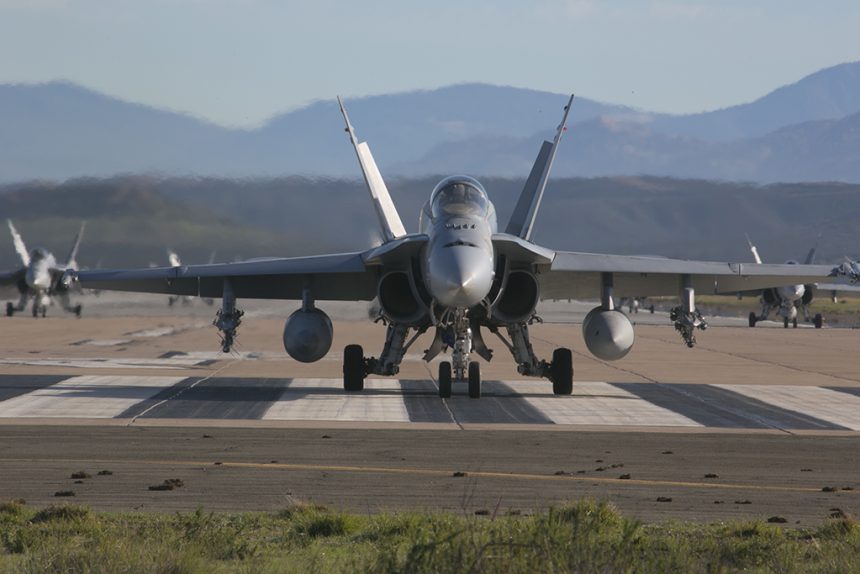Long live the Legacy Hornet!
On the very same day the U.S. Navy bid farewell to its last operational “Legacy Hornets” at NAS Oceana, Virginia, the U.S. Marine Corps Marine Aircraft Group (MAG) 11, 3rd Marine Aircraft Wing (MAW), launched 35 aircraft near simultaneously as part of scheduled training activity at Marine Corps Air Station Miramar, California.
Shortly after sunrise, 30 F/A-18A+/C/D Hornets belonging to MAG-11 squadrons (VMFA(AW)-225, VMFA-232, VMFA-314, VMFA-323 and VMFAT-101) and 2 KC-130J Hercules (VMGR-352) started their engines and moved to the taxiway; forming a line, known as an “elephant walk,” which stretched nearly a mile.

During Elephant Walk exercises military aircraft taxi in close formation or in sequence right before a minimum interval takeoff and, depending on the purpose of the training event they then either take off or taxi back to the apron.
In this case, upon receiving the command to launch, the first four aircraft took off. Within seconds, they were airborne and were immediately followed by the next four aircraft; a process that continued until all the aircraft were airborne.
According to the USMC, more than 30 Hornets took part in the training, even though we can count “just” 30 F/A-18s on the runway at MCAS Miramar, in the photos officially released (maybe additional jets did not take part in the Elephant Walk and took off separately).

“I directed this event to exercise MAG-11’s real world capability,” said MAG-11’s Commanding Officer, Col. Simon Doran in a public release that went of to say:
The military significance regarding the power and the capability to simultaneously employ so many military aircraft within such a short period leaves little to the imagination, especially considering that MAG-11 is only one of four MAGs serving within 3rd MAW.
Exercises such as this provide realistic, relevant training necessary for 3rd MAW to “Fix, Fly, and Fight” as the Marine Corps’ largest aircraft wing and ensures the unit remains combat-ready, interoperable, deployable on short notice, and lethal when called into action.
With the retirement of the U.S. Navy’s operational Legacy Hornets, F/A-18A+ Hornets (where “+” designates aircraft equipped with AN/APG-73 radars instead of the original AN/APG-65), C and D remain in service with the U.S. Marine Corps as well as some Navy Reserve squadrons, such as VFC-12 from NAS Oceana and VFA-204 from NAS New Orleans Joint Reserve Base. The Blue Angels will also continue flying their Legacy Hornets while transitioning to the Super Hornets.










